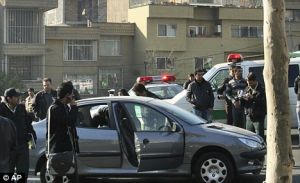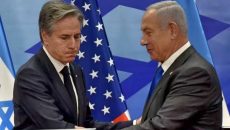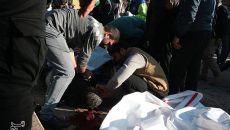Mustafa Ahmadi Roshan, one of the Iranian scientists working at the uranium enrichment facility in Natanz, was slain in the early morning yesterday on his way to work. What killed him was a magnetic bomb attached to his car by a passing motorcyclist. The same technique was used in a November 20th, 2010 attempt to assassinate Majid Shahriari, a professor at the University of Teheran specialized in chain reactions, and Fereydoun Abbasi, head of the Atomic Energy Organization of Iran. Shahriari died instantly, Abbasi survived with minor injuries. Also in 2010, in July, physicist Daryoush Rezaei was also slain by a motorcyclist, but by gunshot. And Massoud Ali Mohammadi, an elementary particle physicist, was murdered in January by a remote-controlled bomb.
Just from reading the headlines, it’s clear that for some time now the conflict with Iran over its nuclear developments has been in a phase that goes beyond political threats and rhetoric. Step by step, a strategy of “targeted homicides” is being implemented, one that brings to mind the old days of international espionage and isn’t without its cruelly sinister elements.
Even in Iran, the term “nuclear scientist” doesn’t mean “bomb builder”. For example, according to sources whose credibility can’t be disregarded, both Shahriari and Mohammadi were theorists, university scholars who weren’t connected to Iran’s Atomic Energy Organization, which coordinates and manages the facilities. And there have been clearly innocent victims: a driver was killed together with Roshan, and Abbasi’s wife was seriously wounded.
In any event, these violent deaths tell us many other things. For example, that Iran is permeable to foreign espionage, which can apparently count on support and complicity from inside the country. This is a sign that the political protests might be smothered through violence yet the discontent remains, and somewhere, somehow, it’s being turned into action.
But the careful selection of the victims and the attempt to spread panic through the elite scientific community also demonstrate how difficult it is for the most exposed countries (the U.S., Israel, Great Britain) to carry out an effective strategy to oppose the ayatollahs’ policies. As we’ve seen, embargoes are very difficult to apply, questionably effective and–for the economies most dependent on foreign oil, even Iran’s–very expensive. Weighing on the “military options” that have been wielded for years as the ultimate threat is the campaign in Iraq, still fresh in people’s minds, and the awareness that Iran’s reaction could be far more serious, especially for Gulf nations that are loyal allies of the U.S. and are crucial for the oil market.
Finally, we can’t overlook the objective difficulty in deciphering the Teheran regime’s political processes. It’s clear that the question of nuclear developments–and therefore relations with the West–is playing a role in internal power struggles. But who will prevail? And with what objective? To build a bomb, well aware that the U.S. would never allow this to be done by a regime that threatens to destroy Israel and, with a nuclear weapon, would be in control of the Middle-Eastern oil routes? The constant provocations (the latest being closing off the Strait of Hormuz and building a new uranium enrichment facility) add to the confusion; up to the very end, even Saddam Hussein tried to leverage on deadly weapons he didn’t have.
For all of these reasons, it’s likely that the decimation of scientists will continue and that, in the meantime, Iran’s lack of reaction will reveal weaknesses which the regime is trying to hide by raising its voice.
Read it in Avvenire January 12th, 2012
 Mustafa Ahmadi Roshani's car after the hit.
Mustafa Ahmadi Roshani's car after the hit. 


